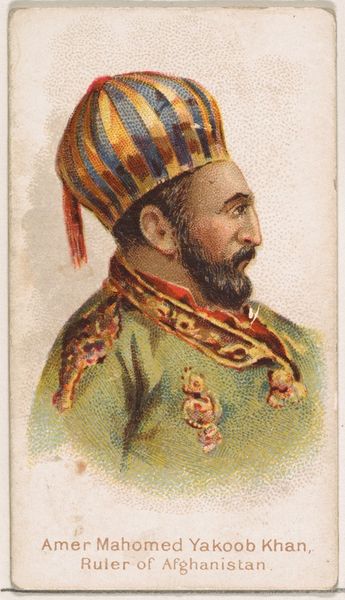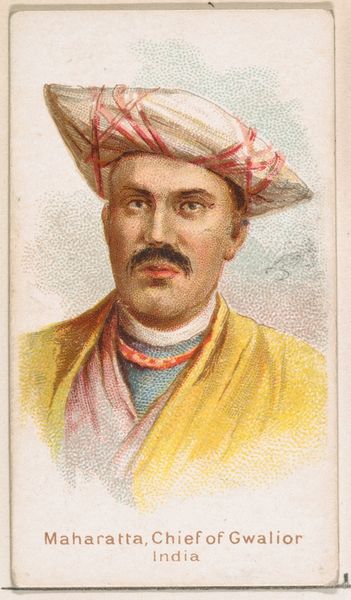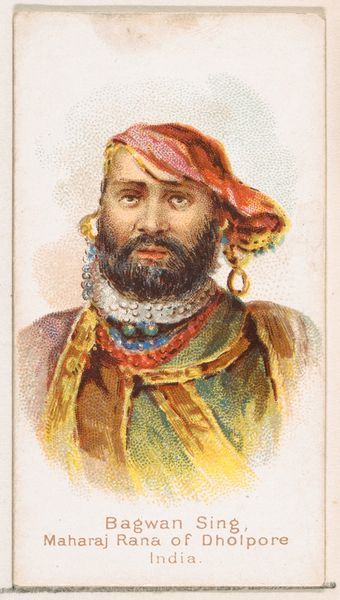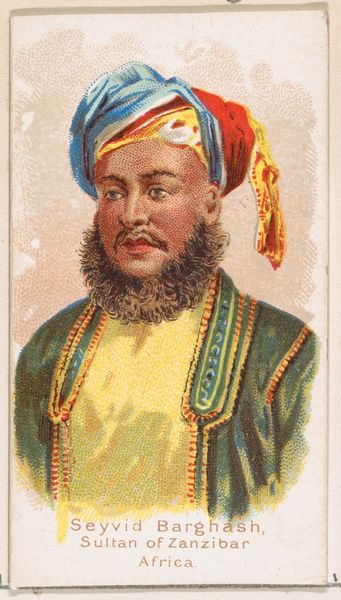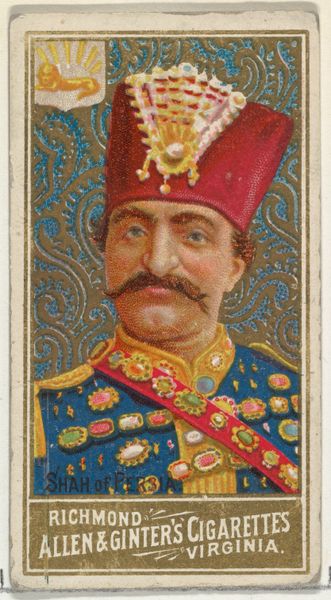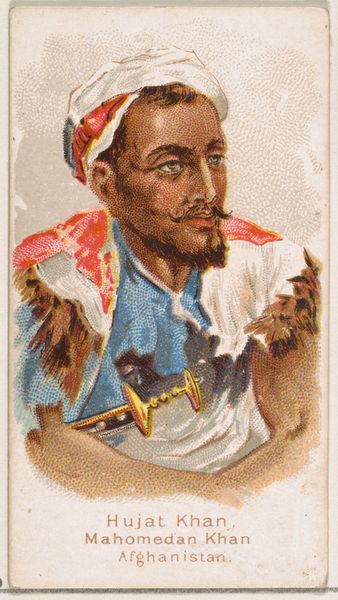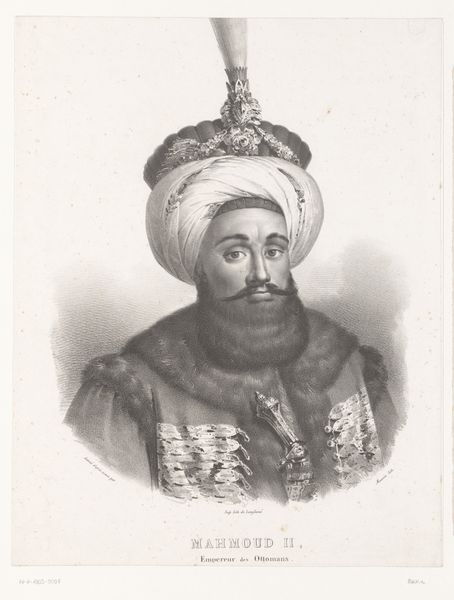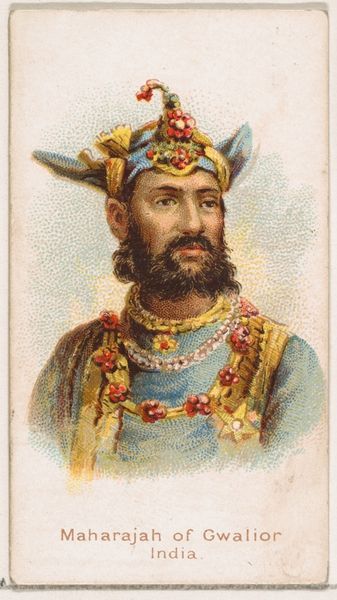
Sambhoo Sing, The Maharana of Meywar, India, from the Savage and Semi-Barbarous Chiefs and Rulers series (N189) issued by Wm. S. Kimball & Co. 1888
0:00
0:00
drawing, print
#
portrait
#
drawing
# print
#
asian-art
#
orientalism
Dimensions: Sheet: 2 11/16 × 1 1/2 in. (6.8 × 3.8 cm)
Copyright: Public Domain
Editor: This is an 1888 print titled "Sambhoo Sing, The Maharana of Meywar, India," part of the "Savage and Semi-Barbarous Chiefs and Rulers" series. It has a rather formal, posed quality. What do you see in this piece? Curator: I see a powerful example of Orientalism, particularly the ways in which Western companies like Wm. S. Kimball & Co. exoticized and othered non-Western cultures through these commercial prints. The title itself, associating "savage" with this ruler, reveals deep-seated colonial prejudices. Where do you see that prejudice operating? Editor: I suppose in the way his image is being consumed by a Western audience – as something exotic and ‘other.’ It feels very removed from any authentic representation of the Maharana himself. Curator: Exactly. And think about the power dynamic embedded in the gaze. The company profits by presenting Sambhoo Sing, an Indian ruler, as a collectible, effectively reducing him to a caricature for Western consumption. Consider how race, class and power intersect here. Does it bring anything to mind? Editor: It reminds me of how indigenous peoples were depicted in early photography, often staged and stereotyped to fit a Western narrative. Curator: Precisely. The image operates within a larger system of representation that reinforced Western dominance. By understanding this context, we can critically engage with the art and challenge the assumptions it perpetuates. Editor: So, it’s about looking beyond the surface and understanding the historical and social forces at play. I didn't initially grasp the depth of the issues it raises. Curator: That’s right. It's through this kind of critical examination that we can uncover the complex narratives embedded within seemingly simple images.
Comments
No comments
Be the first to comment and join the conversation on the ultimate creative platform.


